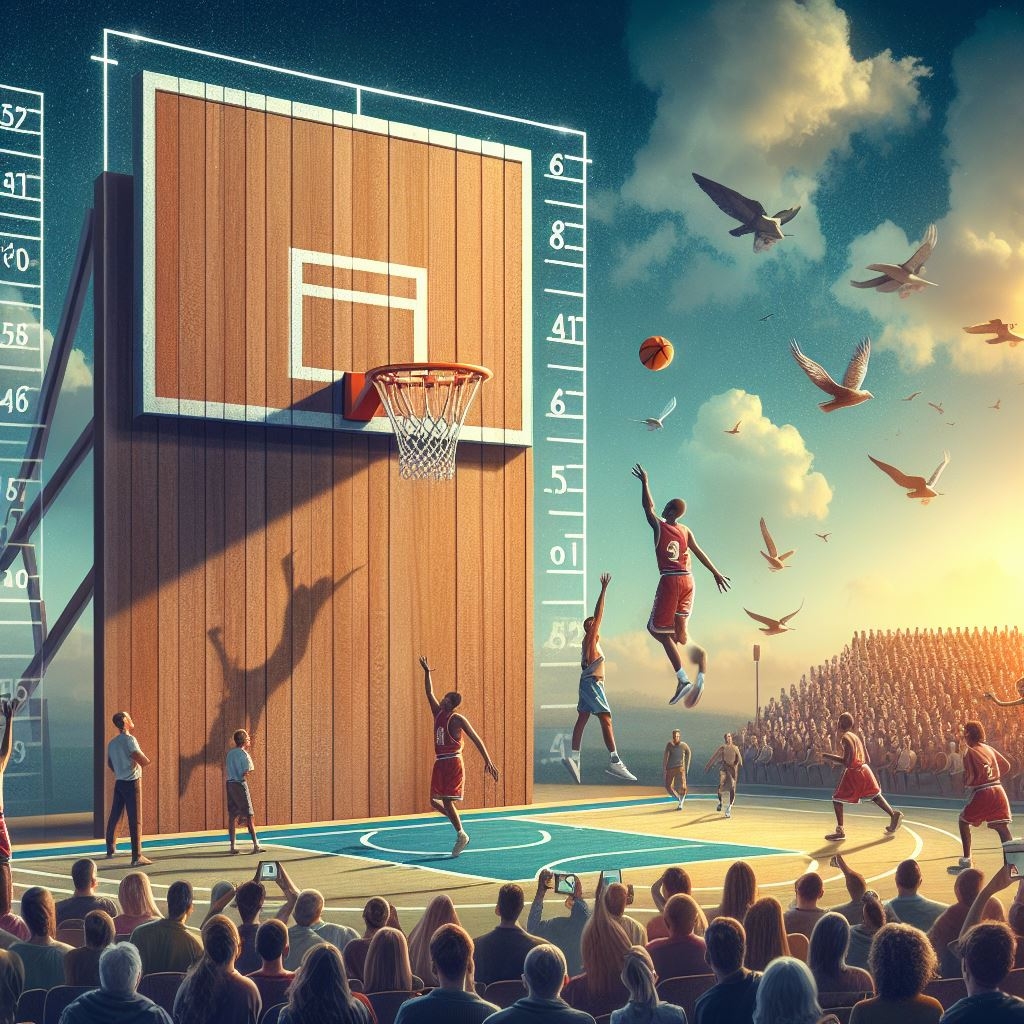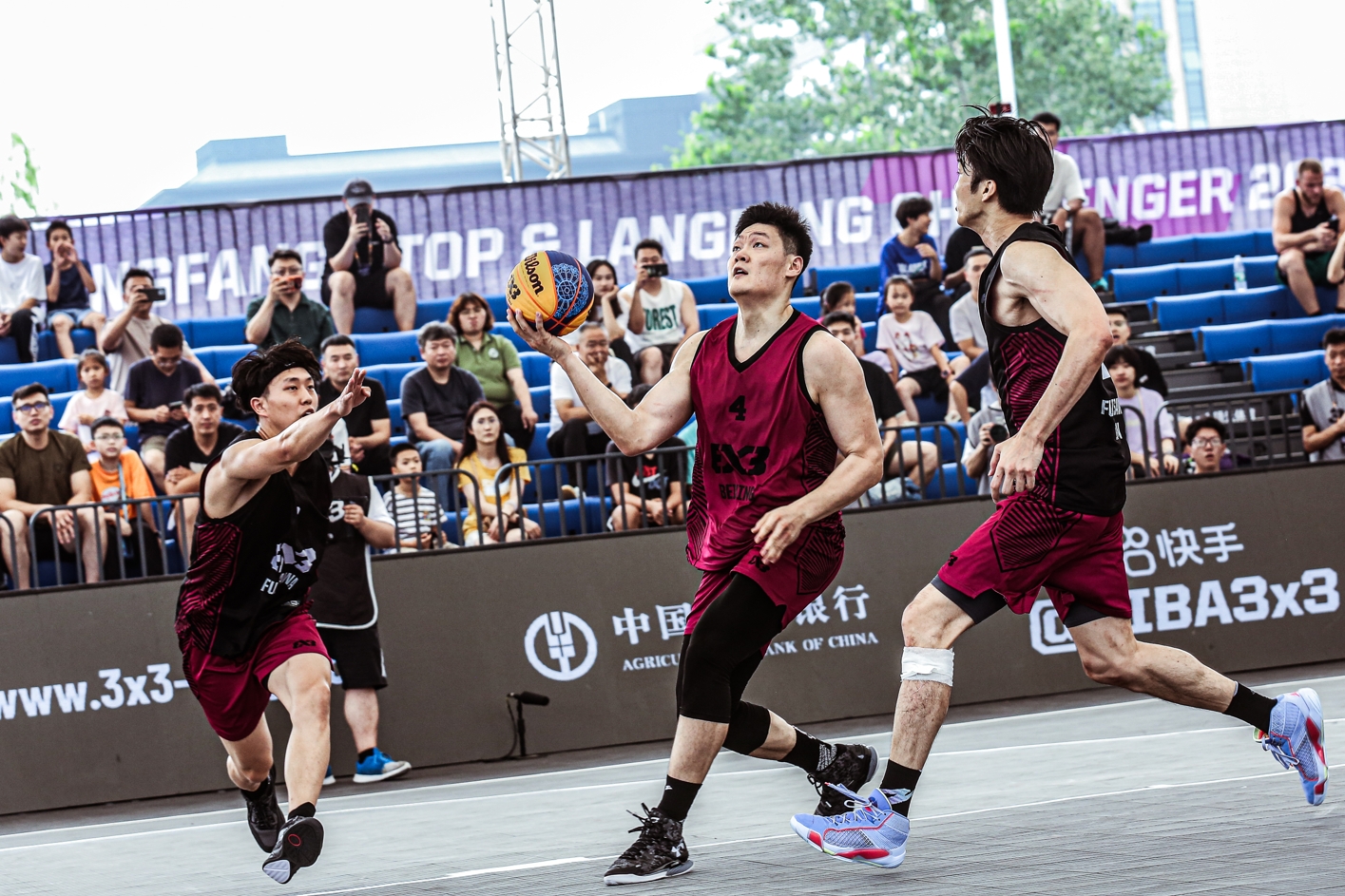One of the most basic aspects of basketball is the height of the hoop. Every basketball player, whether professional or amateur, must adhere to specific height regulations when playing the game.
The height of a basketball hoop has been standardized by various organizations, such as FIBA and the NBA, to ensure fairness and consistency in gameplay. In this article, we will explore the regulations and guidelines for the height of a basketball hoop and the impact it has on the game.
Whether you are a player, coach, or simply curious about the sport, read on to learn everything you need to know about the hoop height.
Let’s get started.
Height of a Basketball Hoop According to Standard
Basketball is a popular sport played by millions of people worldwide. One crucial aspect of the game is the height of the basketball hoop. Here we will explore the reasons for the elevation of a basketball hoop, like the height of a basketball hoop NBA and what is the regulation height of a basketball hoop.

Basketball hoops are typically 10 feet (3.05 meters) from the ground to the top of the rim. This measurement is used in most official basketball games and competitions.
Height of a basketball hoop NBA: The regulation hoop height in the NBA (National Basketball Association) is 10 feet, or 3.05 meters, from the ground to the top of the rim. This height is consistent across all levels of professional basketball, ensuring a uniform playing experience on courts with standardized dimensions.
What is the Regulation Height of a Basketball Hoop?
The basketball hoop height is 10 feet (3.05 meters) from the ground to the top edge of the rim. This standard height is used in most professional, collegiate, and recreational basketball games.
The Factors to Consider When Choosing a Basketball Hoop’s Height
When choosing the size of a basketball hoop, there are several factors to consider. These factors include the intended audience, skill level, and age of the players, as well as the location and purpose of the basketball hoop.

A few key factors to consider are:
1. Player Age and Skill Level:
The height of the hoop should be appropriate for the player’s age and skill level. For younger children or beginners, a lower hoop height is recommended to encourage successful shooting and skill development. As players progress and gain more experience, the height can be adjusted accordingly.
2. Official Standards:
If the basketball hoop is intended for competitive play, it is important to adhere to official standards. In most cases, the standard height for a basketball hoop is 10 feet (3.05 meters) from the ground to the top of the rim. This height is used in professional, college, and high school basketball games.
How Long Is A High School Basketball Game?
3. Recreational Use:
For recreational purposes, the height of the hoop can be adjusted to suit the players’ preferences. Lowering the hoop can make the game more enjoyable for players of all ages and skill levels, allowing for more successful shots and increased participation.
4. Safety factors:
It is always important to put safety first. If the basketball hoop is intended for younger children, it is important to ensure that the height is appropriate to avoid injuries. Lowering the hoop to a height that allows children to reach and shoot comfortably can help prevent accidents.
5. Space Limitations:
Consider the available space where the basketball hoop will be installed. If the space is limited, a lower hoop height may be necessary to accommodate the area and allow for safe play.
6. Personal Preference:
Ultimately, a basketball hoop’s height is influenced by personal preference. Some players may prefer a higher hoop to challenge themselves, while others may prefer a lower height for easier shooting.
Ultimately, when choosing the size of a basketball hoop, it is important to consider the players’ age and skill level, adhere to official standards for competitive play, prioritize safety, and take into account space limitations and personal preferences.
Adjustability Options for Basketball Hoops
When it comes to basketball hoops, having adjustability options is essential for players of all ages and skill levels.

Whether you are looking to install a hoop in your driveway or at a community park, here are some adjustability options to consider:
Height Adjustment:
The most common adjustability feature is the ability to adjust the height of the hoop. This allows players of different ages and heights to enjoy the game at their level. Look for hoops that offer a wide range of height adjustments, typically ranging from 7.5 feet to 10 feet or more. Some hoops even offer infinite height adjustments for more precise customization.
Height of a Basketball Hoop Backboard:
Another adjustable feature to consider is the size of the backboard. While the regulation size for professional basketball is 72 inches wide and 42 inches high, not everyone has space for such a large backboard.
Look for hoops that offer various backboard sizes, ranging from 44 inches up to regulation size. A smaller backboard can be more suitable for smaller driveways or younger players, while a larger backboard can provide a more authentic playing experience.
Rim flexibility:
Some basketball hoops offer adjustable rim flexibility, allowing you to choose between different levels of bounce or rigidity. This feature can be especially beneficial for younger or less experienced players who may need a more forgiving rim to improve their shooting accuracy.
Additionally, there are variations in rim design, such as double-rimmed hoops, which feature an extra layer of reinforcement. Double-rimmed hoops are known for their durability and are often preferred in outdoor settings where the hoop may be subjected to harsh weather conditions and heavy use.
However, it’s important to consider the pros and cons of double-rimmed basketball hoops. On the positive side, double rims are more resistant to damage and bending, making them a durable option for outdoor play.
Stability and Durability:
While not technically an adjustability option, it is important to consider the stability and durability of the hoop when making your purchase. Look for hoops that are made with high-quality materials and have a solid base or anchor system to ensure stability during intense gameplay.
Remember to consider the intended users and their skill levels when choosing the adjustability options for your basketball hoop. Having a hoop that can grow with the players and accommodate different skill levels will make the game more enjoyable for everyone involved, whether it’s on an indoor or outdoor basketball court.
Hoop Height for All Ages
When it comes to playing basketball, the height of the hoop can make a big difference in the game. It is important to choose the right hoop height for different age groups to ensure a fair and enjoyable playing experience. Here is a guide to help you determine the appropriate hoop height for all ages:
- Preschoolers (Ages 3-5): For the youngest players, a hoop height of 4 to 6 feet is recommended. This allows them to develop their skills and coordination without feeling overwhelmed by a high hoop.
- Elementary School (Ages 6-10): As children grow older, the hoop height should be adjusted accordingly. A standard hoop height of 8 feet is recommended for this age group. It provides a challenge while still allowing them to develop their shooting and dribbling skills.
- Middle School (Ages 11-14): At this age, players are ready for a higher challenge. The standard hoop height of 10 feet should be used, which is the regulation height for high school and college basketball. This helps them prepare for more competitive play in the future.
- High School and Adults (Ages 15+): For high school players and adults, the regulation hoop height of 10 feet is the standard. This is the height used in professional basketball games and ensures a fair and consistent playing experience for all.
It is important to note that these recommendations are general guidelines and can be adjusted based on individual skill levels and abilities. Furthermore, adjustable hoops are a great option for younger players since they allow for easy height adjustments as they grow.
Remember, the most important aspect of playing basketball is to have fun and enjoy the game. So, choose the right hoop height for each age group to ensure a positive and rewarding experience for all players.
Summary
Hoop height is one of the most important aspects of basketball. The standard height for professional and college basketball is 10 feet, while the height for high school and youth games may vary.
It is essential to ensure that the hoop is set at the appropriate height to maintain fairness and promote skill development. Whether you are a player, coach, or facility manager, understanding the correct basketball hoop height is vital for the game’s integrity and success.
FAQs
Height of a Basketball Hoop in Meters
The height of a basketball hoop is 3.05 meters or 10 feet. Hope that helps.
What is the Height of an NBA basketball Hoop?
The height of an NBA basketball hoop is 10 feet (or 3.05 meters) from the ground to the rim. Almost all professional and amateur leagues in the world use this height for basketball hoops.
What is the Purpose of the Height of a Basketball Hoop?
The purpose of the height of a basketball hoop is to make the game challenging yet achievable for players of different ages and skill levels.
The standard height of a basketball hoop is 10 feet, but it can be adjusted for younger players or those with disabilities. So, whether you’re a beginner or a pro, the height of the hoop is an essential factor in making the game fair and fun for everyone.
Read More






